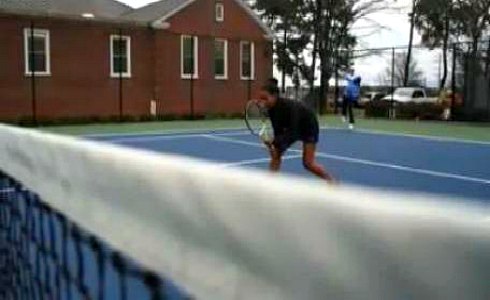
In April 2012, Spelman College made national headlines when the school announced that it was completely eliminating all intercollegiate athletics at the end of the 2012-2013 academic year. With Spring Break less than a week away, these last two months of the semester signal the end of an era.
For more than ten years, the Spelman Jaguar athletic program, which includes basketball, cross country, golf, volleyball, soccer, softball and tennis, has been affiliated with NCAA Division III competition, whose athletes do not receive athletic scholarships. When numbers showed that the athletic program was beginning to dwindle, Dr. Beverly Daniel Tatum, the college’s president, decided to make drastic change.
Tatum decided to rid Spelman of its NCAA athletics program, which would save the school about $1 million a year, a somewhat small price to pay for the administration, but a large blow to the 80 students who play competitively, representing only four percent of the student population.
A significant statistic within Spelman’s student population was also a huge factor. One out of every two students at the school has either high blood pressure, Type 2 diabetes or is overweight. Tatum’s plan calls for a campus-wide health and fitness program that will benefit all students, including the soon to be former athletes.
“We’re just trying to make sure that we close things out in a proper, positive manner,” Germaine McAuley, Spelman’s athletics director said. “When this program has finished for the year, people are going to be sad, but we want to celebrate the achievements of all of our student-athletes and coaches as we close out.”
McAuley would like to bring the athletic alumnae back to campus for a reception at the year’s end and allow each of the teams to have their own celebration for the completion of the program.
Tatum’s decision apparently had nothing to do with budget. The Great South Athletic Conference, Spelman’s conference, had a level of uncertainty going into the next school year with the conference beginning to decrease the number of teams. Instead of becoming an independent institution, Tatum developed an idea on how to better fund the general student population.
Her main objective will be to expand Spelman’s health and wellness program, along with renovating fitness facilities. Some of the funds that would normally go to athletics will help aid the renovation of Read Hall, the school’s gymnasium, built in the 1950s. Read Hall will be transformed into a 24-hour state-of-the-art fitness facility with an updated weight and cardio room, expanded locker room and the possibility of an indoor track. Renovations are scheduled to be complete in 2014.
“The removal of Spelman’s competitive sports program may benefit the school budget and it may even alleviate some insurance or medical issues with athletes getting injured every day,” said Britney Henderson, a Spelman alumna and former soccer player. “But it will never surmount the loss of Spelman women feeling that reward of competing on a collegiate level, building academically inspiring relationships with their coaches, and most of all the sisterhood that comes from having a team dedicated to winning games and playing sports they love.”
Lauren Holloway, a senior on the Jaguar tennis team, said that while she didn’t choose her school based on athletics, she did like that Spelman afforded her the option to play competitively.
“Now in my senior year at Spelman, I am very sad to see the program go,” she said. “Being part of a college athletics team is much more than a good workout and leisure activity after classes. It’s a time to build uplifting, positive bonds with our peers, foster a sense of pride throughout our school, and balance out our hectic academic demands with a healthy outlet that relieves our stress.”
Overall, Spelman has been successful wrapping up its final year as a member of the GSAC. In October, the Jaguars cross country team won their first ever conference championship and the basketball team reached the semi-finals of the conference tournament just last week.
“Removing Spelman sports will break the hearts of women who have so proudly worked to establish sports at Spelman with their own blood, sweat, and tears,” Henderson added. “The legacies they have built were intended to remain for future generations to have the opportunity to achieve their goals as collegiate sportswomen at Spelman College.”
